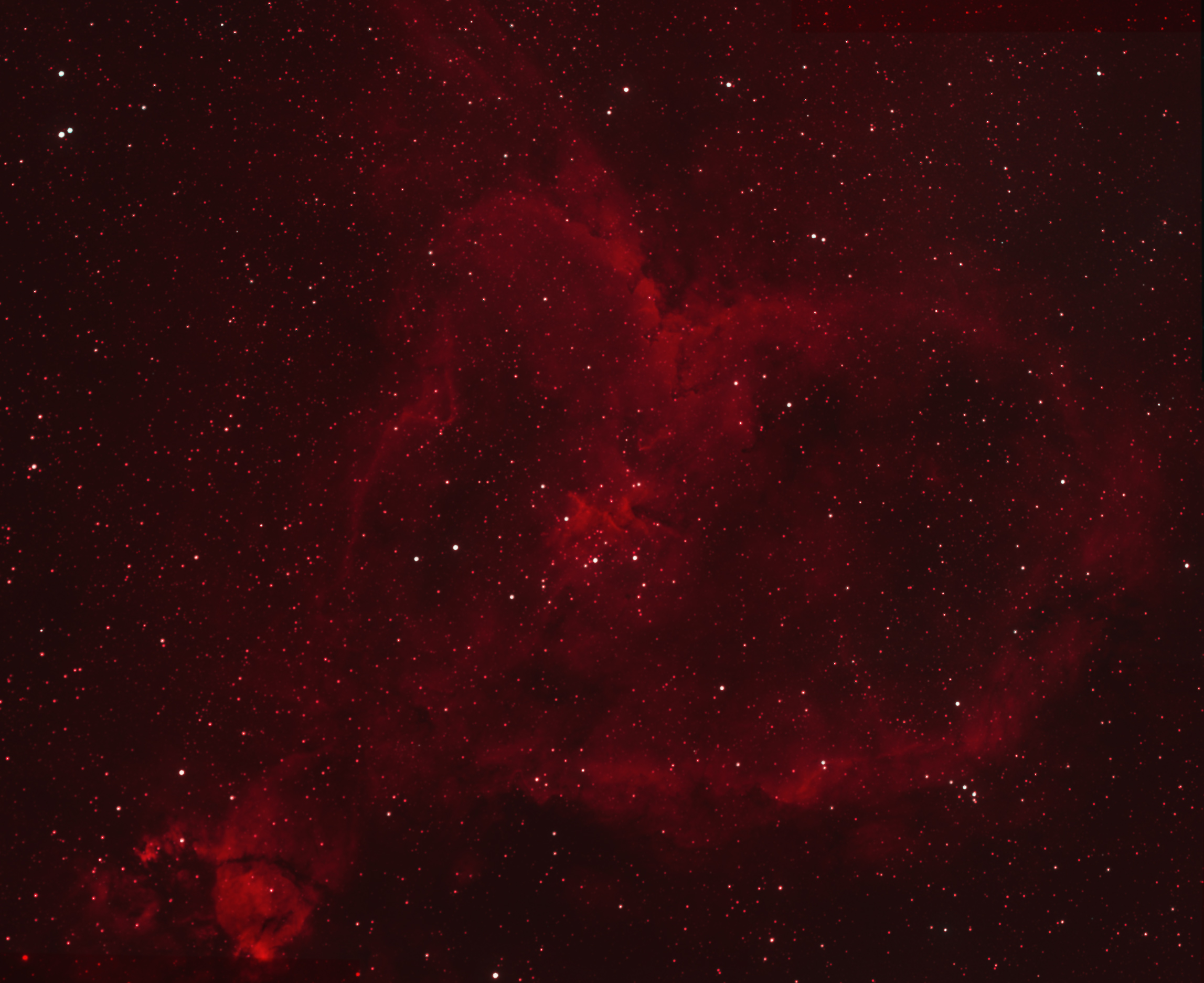
Click image to see full size
| Common Name |
Heart Nebula |
| Formal Name |
IC 1805 / Sh2-190 / Running Dog Nebula |
| Date |
7/2008 |
| Constellation |
Cassiopia |
| Location |
Chapparal Camp, Colorado |
| Equipment |
Tak Sky90 mounted on Losmandy G11 Gemini, SBig 2000XM Camera/Filter Wheel, Astrodon filters |
| Temperature |
−20°C |
| Exposures |
| # |
Exp (sec) |
Filter |
Bin |
Net Time (hr) |
| 2/1/4/4 |
1800 |
HAlpha |
1x1 |
5.5 |
| 2/5/2/1 |
1800 |
OIII (B,G) |
1x1 |
5 |
| 2/0/2/3 |
1800 |
Lum |
1x1 |
|
| LL/LR/UL/UR |
|
|
|
|
|
|
|
|
|
|
|
|
|
|
|
|
|
|
|
|
|
Total |
|
14 hrs |
|
| Processing |
4 panel mosaic.
Calibrated in CCDSoft
Aligned and averaged in Registar
Channels constructed in Photoshop
Adjusted Levels and Curves, cropped, filtered in Photoshop
Used Gerard's Nebula Technique in PixInsight |
| Notes |
- Distance 7500 lyr
- Forms a large star-forming complex in the Perseus Arm of the Milky Way. The clusters found in the region belong to the Cas OB6 association.
- The nebulas glow comes from the radiation of a small open cluster of stars known as Melotte 15. The cluster contains very young, blue, hot supergiant stars about 1.5 million years old. It is located near the nebula centre and home to several bright stars with a mass almost 50 times that of the Sun, as well as many faint stars far less massive than the Sun.
- Melotte 15 once contained a microquasar, a radio emitting X-ray binary system, but the system was expelled from the cluster millions of years ago.
|

